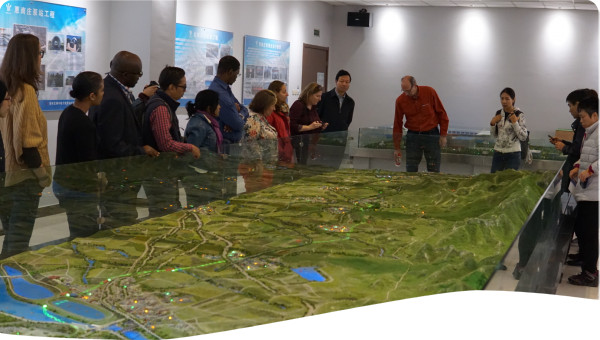The Matura watershed is located in the eastern region of Trinidad. The major threats to watershed degradation originate from anthropogenic activities that are unsustainably executed. Several mitigation measures were initiated by the regulatory agencies that constantly monitor the watershed as well as the community-based organisation, Nature Seekers.
The Matura watershed is located in the eastern region of Trinidad. The drainage area of this watershed is approximately 5.2 km² which encompasses the Matura community. The Matura watershed is bordered by the Salybia watershed to the east, Toco watershed to the north and the North Oropouche and Rest North Oropouche watersheds to the west. The Matura watershed is located within the North Oropouche Hydrometric Area which consists of 9 drainage basins encompassing a total area of 606 km². The Matura River has multiple uses including a surface water treatment plant owned and operated by the Water and Sewerage Authority (WASA). This plant supplies water to the village of Matura, additionally villagers use rainwater harvesting to augment supply to their households. The Matura watershed is therefore of great significance to the operation of the Matura Water Treatment Plant and the WASA.
It represents an area where the balance between human and ecological capacity has been aptly maintained. There are many emerging threats which has the potential to alter this equilibrium within the watershed. The major threats to watershed degradation originate from anthropogenic activities that are unsustainably executed. These activities include: illegal quarry operations, illegal timber harvesting, improper agricultural practices, alternative (illegal) agriculture and uncontrolled recreational activities.
Several mitigation measures were initiated by the regulatory agencies that constantly monitor the watershed as well as the community-based organisation, Nature Seekers. These mitigation actions range from micro-scaled projects for specific areas of the Matura watershed to broader, holistic programmes geared towards watershed rehabilitation and effective natural resource management in Trinidad and Tobago.
Nature Seekers, was established with the aim of protecting the nesting ground of sea turtles along the Matura Beach. This was the first co-management model developed in Trinidad between the community members and the Forestry Division for sea turtle conservation. The model establishes that communities can actively contribute towards the protection and sustainable management of natural resources while simultaneously gaining improvements in its socio-economic status and livelihood.
Nature Seekers formed out of a need for protection of nesting turtles after a long history in the community of hunting these turtles for eggs, shells and meat. The Wildlife Section of the Forestry Division recognised the importance of community involvement in the conservation of the Matura Beach nesting ground after it was declared a Prohibited Area in 1990. Consequently, Nature Seekers was formed by a group of villagers that have been able to reduce the rates of turtle slaughtering from 30% to zero.
The educational programmes are carried out in the schools of the communities along the north-east coast of Trinidad attempting to bring awareness to the relationship between turtles and fishing as well as the importance of watershed rehabilitation to water supply in the community.
In 2005, the National Integrated Water Resources Management Policy (NIWRMP) was enacted in Trinidad and Tobago. Integrated Water Resources Management (IWRM) Stakeholder Forum initiated in 2009. The forum was able to bring to the fore the major water issues facing civil society, corporate entities and government agencies.
Regulatory agencies recognized a significance of community involvement in the process of natural resources management. As a result, the collaboration between Nature Seekers and the Forestry Division as well as the Ministry of Environment and Water Resources is strengthen. The adaptive capacity of the community is strengthen through the training and education programmes provided by Nature Seekers. The effect of this type of strategy is one which will not materialise for generations to come but will have a powerful influence on the way a community is able to actively participate in the management of its natural resources. Spin off effect of stakeholders’ involvement was more stringent enforcement of illegal quarry operations.
The actions that have been taken to protect natural resources within the Matura watershed have been sustainable primarily because of community participation in its planning, implementation and monitoring.
The Nature Seekers model is one that has been applied to adjacent similar watersheds where the community are included in both conservation and business initiatives.
Building awareness among youth will have a substantial and long-term effect on the culture of the Matura community to one of environmental sustainability and natural resource protection.
Community engagement is critical to the sustainability of natural resource management strategies as community members are actively involved in the decision-making and execution process which brings a sense of ownership.
Eco-tourism is one of the main industries in the Matura watershed and from the example of Nature Seekers, if the community is allowed to sustainably benefit from the natural resources the need for conservation of the resource becomes intrinsic.
 Case studies
Case studies


